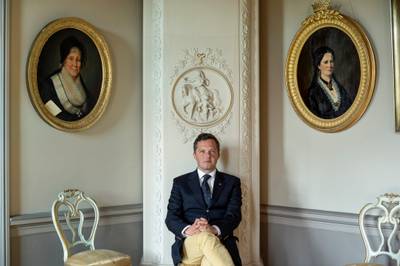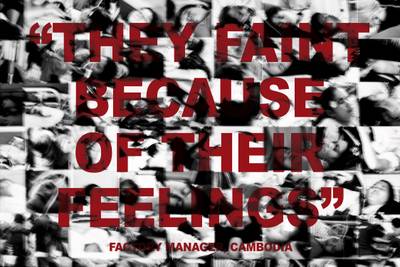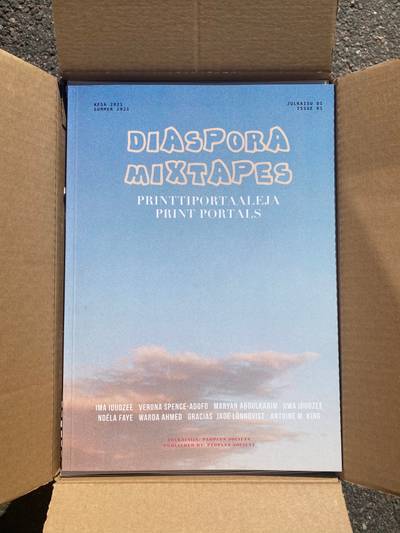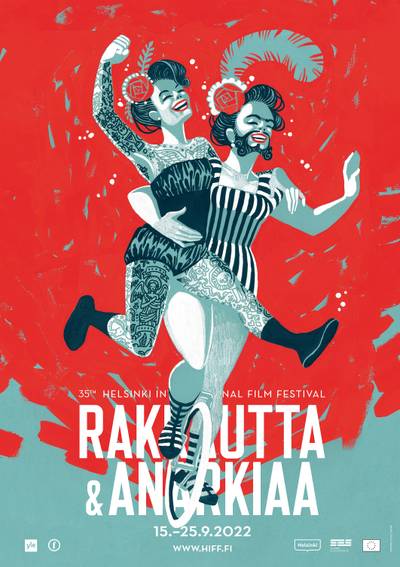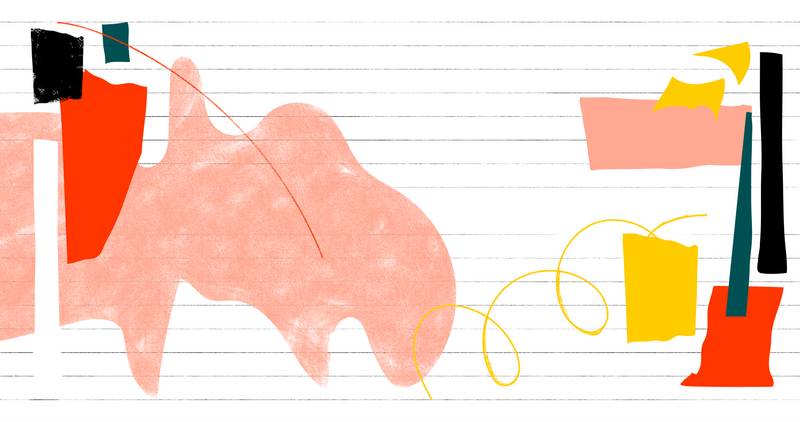

Marina Valle Noronha is an independent curator and doctoral researcher at Aalto University, Finland where she investigates curatorial theory and ethics of care within museum collections development. In her work, Marina puts forward different ways to look at art that leads to new forms of engagement with objects.
Book review: Sorbus — Wasted Years: sad, sexy, and artist-run (Khaos Publishing, 2020, 192pp, 30-45€)
“It’s not a question of being against the institution: we are the institution. It’s a question of what kind of institution we are, what kind of values we institutionalize, what forms of practice are rewarded, and kinds of rewards we aspire to.” — Andrea Fraser, 20061
Apologies in advance to start something with another quote about Institutional Critique. I feel tired of promoting that legacy also. But there is still something about Fraser’s words that resonate quite nicely here. It felt compelling enough to repeat it for this review and for the times we, human animals, live in. Though the six years of Sorbus gallery in Helsinki between 2013-2019 might feel short, it does not prevent Sorbus from establishing itself as an institution. For six years, Sorbus embraced itself in the institutional dynamics: it was funded by multiyear grants, its events were reviewed by media outlets, it took political stands. The publication Sorbus — Wasted Years: sad, sexy, and artist-run, functions as an artist-run gallery retrospective. It reinforces Sorbus as institution. And it was also funded by established Finnish institutions. (As a note, there is no question about the numerous costs involved in making a book, not mentioning fees to contributors; more about this later.) Though a small-scale artist-run institution, Sorbus presents itself in the back cover of Wasted Years as creating conditions and generating alternative approaches through art activism. I strongly sympathize with that prompt and decided to look at Wasted Years from this perspective.
Published in 2020, Wasted Years has been reviewed by a few Finnish language media outlets2. It won the Edvard Richter award3 in Finland in that same year. The value of the publication has been already acknowledged in the arts scene. Instead of rolling it out once more here, I decided the way I can contribute best is to look at Wasted Years as an artist-run memoir and speculate beyond its 192-page constraint.
Wasted Years takes readers back to places that many of us have not been part of for some time now. At first, it is difficult to engage, because much of what is in front of me is so contrasting with everything else. After almost a year and a half of social restrictions and concerns related to the Covid-19 pandemic, flipping through Wasted Years might feel disconnected at first. I came across many familiar faces that I have not seen in person during the pandemic-time. Crowded spaces in the pages of the book feel like a distant glamour or luxury.
*

Wasted Years might be asking for readers to take their time, page by page, without rush, and with no strict order. It is guaranteed the reader will always find something new and still there will be plenty of layers to go through each time one opens the book.
The publication is sexy (indeed), artistic, provocative, nostalgic, and contradictory.
But (again) the sense of isolation experienced in the past year — in which much of our social lives were shut down and we were offered an extravaganza of online attempted replacements — I witnessed priorities change in my mind. Excess of information quickly reaches overwhelming rates, so it might feel hard to connect to memories of pre-pandemic art discourse and social events as one flips through Wasted Years. I experienced at times, page after page, being inside a video feed where all the content play automatically, competing for attention. I miss (in everyday life and in the arts) having space and time to breathe and feel grounded.
Don’t get me wrong. With little effort, the reader will notice the amount of work, dedication, and care needed to put together this compilation of material that exhibits the institution in such a comprehensive book form — from introductory texts to poetry and images, and from interviews to commissioned comics and texts. Labels are covered in meticulous details; and a diversity of archival history material translated into page count leaves some established art institutions behind. Sorbus did a nice job documenting the history of their version of an artist-run institution. There is no doubt it is a great contribution to the art scene in Helsinki. Besides that, a much-needed documentation to thicken the art discourse in Finland.
*
As I write this review (here a disclosure to future readers) it comes to mind that Wasted Years might be asking for readers to take their time, page by page, without rush, and with no strict order. It is guaranteed the reader will always find something new and still there will be plenty of layers to go through each time one opens the book.
*
The more I spent time with the book, the more I learned to appreciate Wasted Years’ attempt in being always present in each page, translated into the dynamic between the different content forms. It perhaps counters the six years limit of the gallery project. Or, in other words, I find resonance in the time-limited enterprise of Sorbus (ideally artist-run projects would not be tied to the thought reality brought by a lack of continuous funding). In this case, the short-lived-ness of the gallery sheds light on the overt permanence of art — there’s a majority consensus that not only artworks but institutions should be preserved to live forever.
A photograph4 of the making of k.i. beyoncé collective’s 2015 exhibition The Crusade is staggering. It strikes me because it feels so present: Susan Kooi and Sorbus-Henna are wearing face masks. The photo could have been taken right now. The comics by Jyrki Nissinen’s “Pink Panther’s Art School”5 and Susan Kooi & Lukas Malte Hoffmann’s “Crusty in a good way”6 endure a refreshing fictional atmosphere that is needed to feel connected to the struggling world outside. I can instantly connect to Kaino Wennerstrand’s essay “Writing about art today means being written onto”7 because it calls for change in the ways we (occupied in being humans) live and work. These, together with the “Foreword,” “Thank you,” and “Introduction,”8 were crucial parts that keep the project together and slow down the pace of the publication in order to match my pandemic-altered mind.

In the times we live in, where resources become more and more scarce (socio-political-environmental crisis), I ask myself why human beings still need to accumulate.
The 10 first pages do a good job introducing Sorbus and truly grounding the work that follows in a magazine structure. A connecting thread — which is not exactly necessary — is at times hard to uncover (especially if you have not been part or are not aware of internal jokes or larger discussion9). In turn, it helped to approach the content without much hierarchy, which I realized to be a great feature for any contemporary art space, not to mention the ones that are as (insanely) prolific as Sorbus. “In six years, Sorbus hosted 90 exhibitions and well over a hundred other events, such as concerts and other performances.”10 Bear in mind that the extensive, rich interviews that accompany many of the exhibitions (some of the featured in Wasted Years) might not be included in the count. In my mind, that does not fit into a profile of a small-scale art operation, as Sorbus describes themselves. Or it should perhaps not be.
I must confess that it bothers me the need to overproduce in the arts. It can only bring conflicting feelings about a culture of working in the arts that always wants to prove itself more, regardless of budget cuts. In the times we live in, where resources become more and more scarce (socio-political-environmental crisis), I ask myself why human beings still need to accumulate. As Mervi Vuorela reminds in her commissioned text “So no one told you life was gonna be this way…,”
the most disturbing thing about this nightmare is that we know everything is fucked up, but we keep on partying like it’s 1999. We puff carbon dioxide into the atmosphere, fill the oceans with plastic garbage, and watch one species after another go extinct. On our way to the bank or the pub, we record our burning world with our phones. Those phones were built in sweatshops and the metals found in them were dug in mines whose profits are used to finance civil wars across Africa, for instance.11
So much motion can only come heavy in our bodies. Perhaps Sorbus felt that too when (sadly but understandably) deciding to stop after six years in the run.
I can’t avoid but bring up Six Years12, a multi-year project turned into book by Lucy Lippard. Besides the same six-year time span it shares with Sorbus, Lippard’s practice somehow works as a form of institution, experimental curatorial practice. Visionary then, though no longer radical nowadays, I remember the emphasis for Lippard in understanding her practice during that time as a continuous entity, regardless of media specificity. Six Years, as an overall project, is part exhibition and part publication. I can clearly connect to it, and this might also be the case for Sorbus. And because of that I want to push the notion of an artist-run memoir a bit further.
(“Six Years” is also part of the title of a recent online publication by another Helsinki based artist-run initiative, called Third Space.13 The publication is reviewed in this same edition of NO NIIN :)

Artist-run spaces are historically socially progressive spaces. They have been “loosely defined as the co-articulation of artists and their institutions via processes of sociality and mutuality.”
Artist-run spaces are historically socially progressive spaces. They have been “loosely defined as the co-articulation of artists and their institutions via processes of sociality and mutuality.”14 Artists have also re-visited their artist-run spaces in form of publications.15 But how to achieve the same sense of community that happens because of attending events at Sorbus or collaborating “with some 300 artist colleagues”16 in a publication format? It comes to mind the distribution networks for an artist-run publication. What exactly is (or could be) the job of a “papery extension of that space,”17 or how to best apply the knowledge of a contemporary artist-run initiative towards access and distribution of information?
It is pressing to try to uncover and commit to ways of living and working (regardless the small size of the action) that take us out of the socio-political-environmental nightmare into a more democratic place to live. Ideally, everyone involved in the Sorbus enterprise (plus many others who might want to learn from the initiative) would be able to afford a copy. But being that most likely not the case (the publication cost ranges from 30-45€ depending on the shop), this might be a hindrance for some artists and artist-run spaces. As already acknowledged here, there are of course many costs involved in editing, publishing, and distributing a book. It would be refreshing though to know about other forms of parallel distribution for the book and its content. Being available in bookshelves of museums, small independent shops, libraries, or online bookshops, adds only a fraction to the artist-run discourse. How does Sorbus feel about sharing its own publication in copyleft collaborative platforms? What artist-run publications might learn from the art practices they promote?
All these questions, which are easier to write than to answer, involve a lot of work and there is no right vs. wrong in this case. Still, they come from a place of hope in artistic production, that publishing as a form of public programming has uncovered potential. It can steer us towards a more imaginative and less western normative places that fulfill a way of living (and working) in better resonance with the needs of a suffering world. The conditions one creates to generate alternative approaches while the world struggles are at high stake. The time frame for that is of course way above six years. It is not the sole responsibility of one and it depends on a collective commitment to respond to socio-political-environmental issues the world faces.
Meanwhile, it is becoming more common for books to have different editions tailored for different readers, or prices depending on the outreach: libraries, universities, research institutes, and other medium-large scale institutions pay higher prices, as copies are made available for a larger number of potential readers.

To nurture publishing infrastructures is a political action. Conventional publishing and distribution in the arts should — and hopefully will — be more and more accompanied by alternative and collaborative publishing (access) platforms.
One way of promoting affordable publishing and reducing the access gap in access to publications is to participate in alternative online platforms. Monoskop18 is an example of online platform that defines itself as a wiki19 for arts, media, and humanities; it hosts an “Artist publishing/ Index.”20 Over the past (at least) 15 years, the founder Dusan Barok, together with thousands of users, amounted an impressive number of entries in the arts. The website has been many times praised as an avantgarde approach to publishing. Indeed, being at Monoskop.org feels getting acquainted with one of the aspects of the future of contemporary publishing. Other pirate library highlights that address public and mass access to publishing in the arts and humanities are e.g. Sci-hub,21 a pirate website that provides access to academic publications, and UbuWeb,22 another pirate website for avant-garde content. These are only a sample of the many alternative publishing strategies available out there.
I want to conclude here to give way to possibilities, as artist-run spaces’ cycle continue to flourish and thrive. To nurture publishing infrastructures is a political action. Conventional publishing and distribution in the arts should — and hopefully will — be more and more accompanied by alternative and collaborative publishing (access) platforms. Artists-run initiatives can take to publishing what they promote in their missions through public programming. There is sure potential for newcomers and established ones. As Vanessa Kowalski argues in On Curating, Online: Buying Time in the Middle of Nowhere23, the advent of the internet allowed for the development of a new era for curating and publishing. Kowalski refers to it as slow publishing. What a nice way to name something that many of us in the arts and humanities have felt so strongly in the past year and a half. Long live unlimited artist editions, for a more unlimited approach to information distribution in the institutions of arts.
